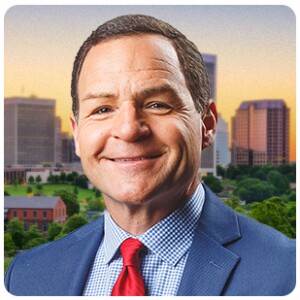RICHMOND, Va. -- When Judy Hart accepted the job as a park ranger for the National Park Service, she was practically standing on an island alone.
”There is a whole history of the Park Service resisting female park rangers,” Hart said. “I got the job and it was my absolute dream job. Absolute dream job.”
The native of Kansas, who was breaking glass ceilings in the 1970s, recognized there was something lacking in America.
“Out of 316 parks at the time three focused on women,” she said. “I thought three out of 316 isn’t cutting it.”
So the newly-minted park ranger floated the idea to her bosses to establish another National Park.
“I want[ed] to suggest we have another park on women’s history,” she said.
Seneca Falls, New York was selected as the perfect place.
“I looked at it and said, ‘I don’t care. We can turn this into a national park. I don’t know how but I don’t care,’” Hart said.

In 1848, the town in upstate New York was the site of the first women's rights convention led by Elizabeth Cady Stanton.
”Elizabeth Cady Stanton was a firebrand. An absolute firebrand,” Hart said.
At the two-day convention, Stanton and organizers demanded equal rights including the right to vote.
“So the idea of calling a convention was outrageous. Totally outrageous,” Hart said. “Three hundred people showed up. Nobody expected that.”

For Hart, making her dream a reality was far easier on paper.
She was made Superintendent and given a budget of $60,000, an amount that included her salary.
“I wanted to create things that were positive,” Hart said. “Things that were good.”
There were naysayers and obstacles at every turn.
But Judy Hart was intent on honoring the trailblazing women who came before her.

“I was driven. Especially once I moved out there. I don’t have a choice. I wanted to make this a success,” she said. “I certainly am not going to give up now.”
It took five years and literally an act of Congress, but in 1982 the landmark opened with much fanfare including an appearance by actor Alan Alda.
“It ended up being called the Women’s Rights National Historic Park,” Hart said.
The park includes Stanton’s preserved homestead and the rebuilt Wesleyan Chapel where the groundbreaking convention took place 175 years ago.

“There were so many times it could have not happened. Shouldn’t have happened,” Hart said.
Four decades later, Hart, who moved to the Richmond-area in 2007 to be closer to family, beams thinking of the milestone she helped reach.
“I really wanted to share with people dream big and believe in it,” she said.
For the last seven years, Hart has been working on a book detailing her journey and the park’s creation.
“Not only does it mean a lot to women but the story of how it came to be is also important,” she said.

Much like her female predecessors honored at the site, Judy Hart has been overcoming tall hurdles.
”And I have an expanded feeling that this was all worth it,” she said. “Easily the biggest thing I’ve ever done in my life. It means the world to me. I was so proud of wearing that uniform because it meant I was a ranger.”
But this former park ranger said the victories make the view from the top that much more satisfying.
Women earned the right to vote in 1920, 72 years after the Women’s Rights Convention in Seneca Falls, New York in 1848.
Judy Hart’s book called “A National Park for Women’s Rights: The Campaign That Made it Happen” will be released on Oct. 15, 2023.
Watch for Wayne Covil's stories on CBS 6 News and WTVR.com. If you know someone Wayne should profile, email him wayne.covil@wtvr.com.
Find unique, award-winning stories that celebrate voices in our community on CBS 6 News.






